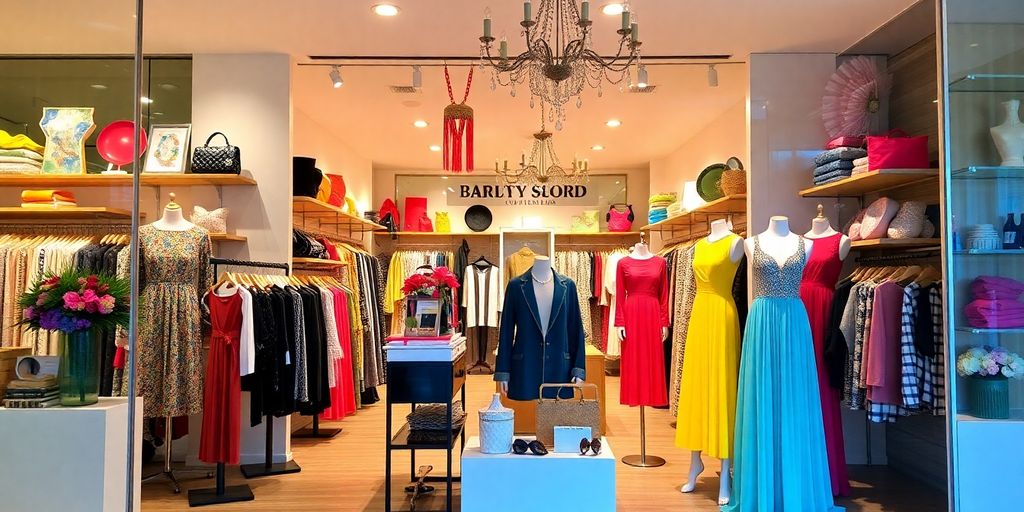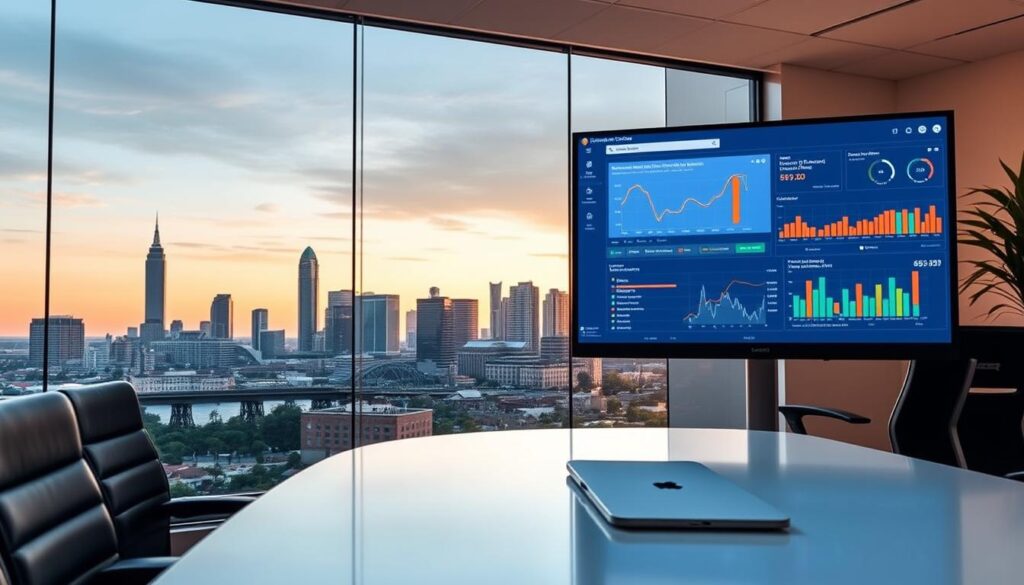SEO, or Search Engine Optimization, is like the secret sauce for making your boutique visible online. You know how crowded the internet is, right? Well, imagine your boutique trying to stand out in that crowd. That’s where SEO comes in. It’s all about tweaking your website so that when people search for things you sell, your store pops up first. This means more people visit your site, and hopefully, more people buy your stuff. Let’s break down how you can make SEO work for your boutique.
Key Takeaways
- SEO boosts your online visibility, making it easier for potential customers to find your boutique.
- Effective keyword research is crucial for targeting the right audience and improving search rankings.
- On-page optimization, including title tags and meta descriptions, enhances your site’s searchability.
- High-quality content keeps visitors engaged and helps establish your boutique as a trusted brand.
- Regularly updating your SEO strategy ensures your boutique stays competitive in search results.
Understanding The Importance Of SEO For Boutiques

Why SEO Matters For Online Boutiques
Running a boutique is tough, especially online where competition is fierce. Here’s the deal: SEO is your secret weapon. It’s all about making your website show up when someone searches for what you sell. Imagine someone looking for trendy dresses or unique gifts—if your boutique isn’t popping up, you’re missing out. SEO helps bridge the gap between your store and potential customers by using the right keywords and optimizing your site. It’s like setting up a signpost on the internet highway pointing directly to your store.
Impact Of SEO On Visibility
Visibility is everything. If your boutique is buried on page 10 of search results, it might as well not exist. SEO pushes your site up the ranks, making it more visible to people searching for your kind of products. Think of it like this: better visibility means more eyes on your store, which can lead to more clicks and ultimately, more sales. The higher you rank, the more credible you look to shoppers. It’s not just about being seen; it’s about being the first choice.
Driving Organic Traffic Through SEO
Organic traffic is the holy grail for any online boutique. It’s the visitors who find you naturally, without paid ads. SEO is key to driving this kind of traffic. By optimizing for relevant keywords, you attract people who are genuinely interested in what you offer. This isn’t just random traffic; these are potential customers who are already looking for what you have. It’s like having a storefront on a busy street where people are already shopping for what you sell. SEO is crucial for boutiques as it enhances website visibility, leading to increased traffic and potential customers.
Conducting Effective Keyword Research
Identifying Relevant Keywords
Finding the right keywords is like finding the perfect outfit for your boutique—it needs to fit just right. Keywords are the bridge between what people are searching for and what your boutique offers. To start, think about what your ideal customer might type into a search engine. Are they looking for "vintage dresses" or "handmade jewelry"? Use your customer’s perspective to brainstorm a list of potential keywords.
Keywords should not only describe your products but also reflect the language your customers use. This means considering both broad terms and more specific phrases that relate directly to your niche. Don’t just aim for high-traffic keywords; focus on those that truly connect with your target audience.
Utilizing SEO Tools
Once you have a list of potential keywords, it’s time to refine it using SEO tools. Tools like Google Keyword Planner, Ahrefs, or Moz can help you see how often certain words are searched and how competitive they are. This step is crucial because it helps you prioritize which keywords to focus on.
- Search Volume: Look for keywords that have a decent search volume but aren’t overly competitive.
- Keyword Difficulty: Aim for a balance between popularity and competition; you don’t want to fight for space in a crowded market.
- Relevance: Ensure that the keywords align with what your boutique actually offers.
Focusing On Long-Tail Keywords
Long-tail keywords are your boutique’s secret weapon. These are phrases that are more specific and usually longer, like "eco-friendly children’s clothing" or "handcrafted leather bags." While they might not have the highest search volume, they attract customers who are ready to make a purchase.
- Specificity: Long-tail keywords capture specific search intents, making them more effective in reaching serious buyers.
- Less Competition: They typically face less competition, giving your boutique a better chance to stand out.
- Higher Conversion Rates: Because they attract more qualified leads, long-tail keywords often result in higher conversion rates.
By focusing on keyword research that prioritizes revenue, you transform keywords into business assets that drive growth.
Incorporating these strategies into your keyword research process will help your boutique attract the right audience and improve its online visibility.
Optimizing On-Page Elements For Better SEO

Crafting Unique Title Tags
Creating unique title tags for each page of your boutique’s website is like giving each page its own identity. These titles should clearly describe what the page is about and include primary keywords. It’s like naming a book chapter – it needs to be catchy and informative. Title tags are crucial because they’re one of the first things search engines and users see. Make sure they are concise, ideally under 60 characters, and directly related to the page content.
Writing Compelling Meta Descriptions
Meta descriptions are those short snippets that appear under your page title in search results. Think of them as mini-advertisements for your pages. While they don’t directly affect search rankings, a well-written meta description can boost your click-through rate. Use action words and include relevant keywords to make them more enticing. Keep them around 150-160 characters to ensure they display fully on search engines.
Structuring Content With Headings
Headings are the backbone of your content structure. They help break down information into digestible parts, making it easier for readers and search engines to understand your content. Use H1 tags for main titles and H2 or H3 tags for subheadings. This hierarchy not only guides your readers but also signals to search engines the importance of each section. A well-structured page can improve readability and engagement, which is key for boosting revenue.
A well-organized page with clear headings and structured content can make a world of difference in how your site performs in search rankings. It’s like setting up a store layout that guides customers effortlessly from one section to another.
Creating High-Quality Content For Engagement
Importance Of Original Content
Creating content that stands out is like crafting a unique piece of jewelry for your boutique. Original content sets your brand apart, making it memorable and engaging for your audience. When you offer something fresh, people are more likely to share it, which increases your reach. Think of your content as a reflection of your boutique’s personality. It should be informative and add value, not just push sales. This builds trust and keeps your audience coming back for more.
Focusing On Audience-Relevant Topics
Knowing what your audience cares about is key. Your content should speak directly to their interests and needs. For instance, if your boutique specializes in sustainable fashion, discuss eco-friendly materials or ethical production processes. Use surveys or social media polls to find out what topics resonate with your customers. This way, you can tailor your content to what they find most engaging.
Regularly Updating Your Content
Keeping your content fresh is crucial. It’s like refreshing your store’s window display to attract passersby. Regular updates signal to search engines that your site is active, which can boost your SEO. Consider updating old blog posts with new insights or adding new sections to keep them relevant. An editorial calendar can help you plan these updates efficiently.
Engaging content is not just about what you say, but how you say it. Make sure your voice is consistent with your brand and speaks to your audience like a friend sharing advice over coffee.
- Use storytelling to make your content relatable.
- Incorporate visuals to break up text and keep readers interested.
- Encourage interaction by asking questions or prompting comments.
For more tips on creating engaging content, consider checking out impactful social media posts that blend creativity with your boutique’s unique style.
Enhancing User Experience And Mobile Usability
Making Your Site Mobile-Friendly
In today’s world, where smartphones are practically an extension of ourselves, having a mobile-friendly site isn’t just a nice-to-have—it’s a must. With more than 76% of people shopping on their phones, your site needs to look and work great on any device. One way to ensure this is by using responsive design, which adjusts your site’s layout based on the screen size. This way, whether your users are on a tablet or a tiny phone screen, they’ll have a smooth experience.
Remember, a mobile-friendly site not only helps with user satisfaction but also boosts your SEO, thanks to Google’s mobile-first indexing.
Improving Page Loading Speeds
Nobody likes waiting around for a slow website to load. If your pages take forever, visitors will bounce faster than you can say "SEO." Use tools like Google PageSpeed Insights to check your current load times and get tips on how to speed things up. Compressing images and minimizing code can make a big difference. Fast-loading pages keep users happy and improve your search rankings.
Organizing Intuitive Navigation
Navigation should be so easy that even a kid could find their way around your site. Think about how you can simplify your menus and make sure everything is labeled clearly. Use design best practices like consistent labeling and logical grouping of similar items. A well-organized site helps users find what they need quickly, which can lead to better engagement and more sales.
- Use clear, descriptive labels for your menu items.
- Group related pages together logically.
- Include a search bar for users to find specific products or information quickly.
In the end, focusing on user experience and mobile usability isn’t just about making your site look good—it’s about making it a place where customers want to stay and shop. By optimizing these elements, you’re not only enhancing the user journey but also paving the way for better SEO results.
Building A Strong Backlink Profile
Collaborating With Influencers
Teaming up with influencers can be a game-changer for your boutique’s online presence. These partnerships not only boost your brand’s visibility but also create valuable backlinks. Here’s how you can do it:
- Identify influencers in your niche who align with your brand’s style and values.
- Reach out with a personalized message or proposal for collaboration.
- Offer them free products or exclusive discounts in exchange for a review or feature.
By building these relationships, you can tap into their audience, which can lead to more traffic and credibility for your boutique.
Creating Shareable Content
Producing content that others want to share is a surefire way to earn backlinks. Focus on creating high-quality, engaging content that resonates with your audience and beyond. Consider these types of content:
- Infographics that present data in a visually appealing way.
- Comprehensive guides on fashion trends or styling tips.
- Entertaining videos that showcase your products in action.
The more your content is shared, the more chances you have to gain backlinks from reputable sites.
Participating In Online Communities
Engaging in online communities is another effective strategy for building backlinks. Join forums, social media groups, and comment sections where your target audience hangs out. Here’s how to make the most of these spaces:
- Be active and contribute valuable insights or advice.
- Share your expertise without being overly promotional.
- Include a link back to your site in your profile or when relevant.
This approach not only helps you gain backlinks but also positions your boutique as a knowledgeable entity in the fashion industry.
Building a strong backlink profile is like planting seeds for your boutique’s future growth. Each link is a vote of confidence from others, signaling to search engines that your site is trustworthy and worth visiting. Stay consistent and genuine in your efforts, and watch your online presence flourish.
Leveraging Social Media For SEO Benefits
Engaging Content On Social Platforms
Social media is a bustling marketplace where your boutique can shine. The trick is to post content that grabs attention. Think about what your audience loves—maybe it’s behind-the-scenes peeks at your latest fashion line or quick styling tips. Regularly sharing engaging posts can help boost your brand’s visibility.
- Post consistently to keep your audience engaged.
- Use eye-catching visuals to stand out in crowded feeds.
- Share stories and experiences, not just products.
Encouraging User Interaction
Getting people to interact with your posts is like having a conversation. It keeps the community alive and buzzing. Encourage comments, shares, and likes by asking questions or running fun contests.
"A lively social media page not only boosts engagement but also signals to search engines that your brand is active and relevant."
- Ask for opinions on new collections.
- Host giveaways to increase participation.
- Respond to comments to show you’re listening.
Using Relevant Hashtags
Hashtags are like little signposts that guide people to your content. Using the right hashtags can connect your posts with a broader audience. Research trending hashtags in the fashion world and see which ones align with your brand.
- Mix popular hashtags with niche ones to reach different audiences.
- Create branded hashtags for your boutique.
- Keep an eye on what hashtags competitors are using.
By enhancing your SEO with a solid social media strategy, you’re not just boosting your online presence—you’re building a community around your boutique. This connection can lead to more organic traffic and potentially higher sales.
Monitoring And Adapting Your SEO Strategy
Using Analytics Tools
To keep your boutique’s SEO on track, you gotta dive into analytics. Tools like Google Analytics and Search Console are your best friends here. They help you figure out what’s working and what’s not. You can see how many people visit your site, where they’re coming from, and even what devices they’re using. Knowing this stuff lets you tweak your strategy and make smarter decisions. It’s not just about numbers; it’s about understanding your audience better.
Staying Updated On SEO Trends
SEO is always changing, and what worked last year might not cut it today. That’s why it’s important to stay in the loop with the latest trends and algorithm updates. Follow SEO blogs, join forums, or even attend webinars. Being informed helps you adjust your tactics and stay ahead of the competition. SEO is a marathon, not a sprint, so keeping up with changes is key.
Refining Strategies Based On Data
Once you have your data and know the trends, it’s time to refine your strategies. Look at what’s bringing in traffic and what isn’t. Maybe some keywords aren’t performing as expected, or perhaps a blog post is driving tons of visitors. Use this info to shift your focus. For instance, if a certain topic gets lots of hits, consider creating more content around it. Adapting based on real data keeps your SEO efforts efficient and effective.
SEO isn’t a one-time task; it’s an ongoing process. Regularly reviewing your performance and being willing to adapt ensures your boutique stays visible and relevant.
By understanding and applying these strategies, you’ll not only optimize your SEO budget but also enhance your boutique’s online presence. For more insights on maximizing your SEO efforts, consider prioritizing local keywords and user-friendly website design to boost visibility and engagement. Remember, continuous monitoring and adaptability are crucial for achieving the best results.
Conclusion
SEO might sound like a big, techy thing, but it’s really just about making sure your boutique gets seen by the right people. It’s like putting up a big, bright sign that says, "Hey, we’re here!" By using the right keywords and keeping your site in tip-top shape, you can help your boutique climb up those search results. It’s not just about getting more clicks; it’s about connecting with folks who are genuinely interested in what you offer. So, keep at it, tweak things as you go, and watch your boutique grow. Remember, SEO is a marathon, not a sprint, but the finish line is totally worth it.
Frequently Asked Questions
What exactly is SEO and why does it matter for boutiques?
SEO, or Search Engine Optimization, is a way to make your website show up higher in search results like Google. For boutiques, this means more people can find your store online, which can lead to more shoppers and sales.
How do I pick the right keywords for my boutique?
Start by thinking about what words people might use to find your products. You can use tools like Google’s Keyword Planner to help you find popular words that match what you sell.
Why are long-tail keywords important for boutiques?
Long-tail keywords are phrases that are more specific. They might have fewer people searching for them, but the people who do are more likely to buy because they know exactly what they want.
How often should I update my boutique’s website content?
It’s good to update your content regularly. Fresh content can keep people coming back and helps your site stay interesting to search engines.
Can social media affect my boutique’s SEO?
Yes, while social media doesn’t directly change your SEO ranking, it can help more people find your site and share your content, which can lead to more visitors and potential backlinks.
What are backlinks and why are they important?
Backlinks are links from other websites to your site. They are important because they show search engines that your site is trusted and popular, which can help improve your search ranking.






